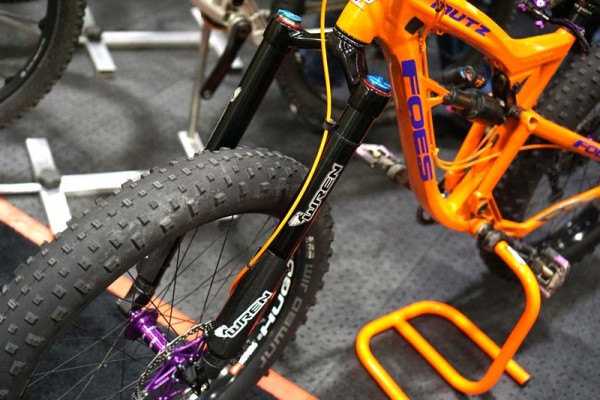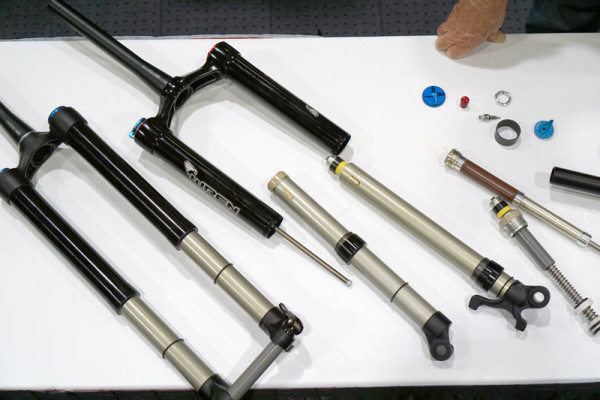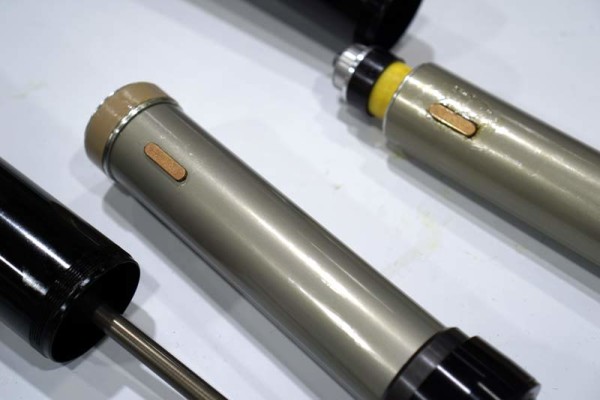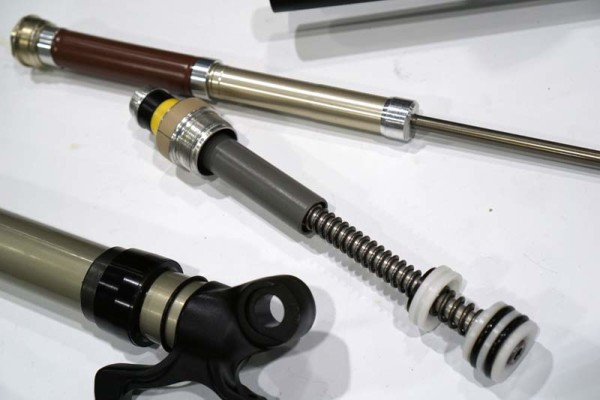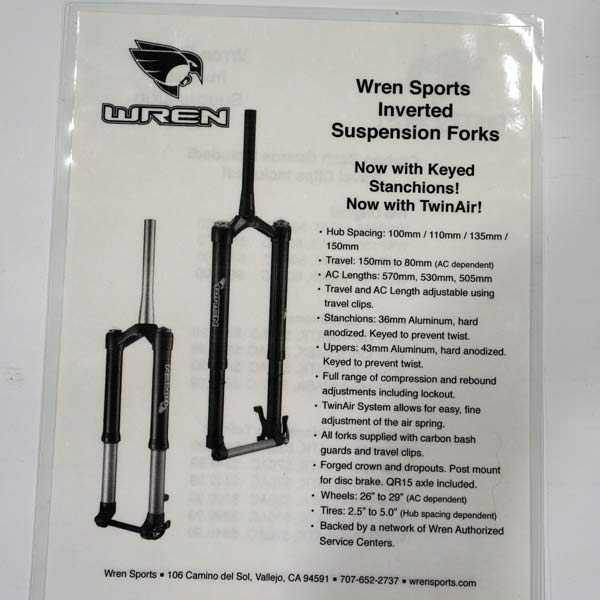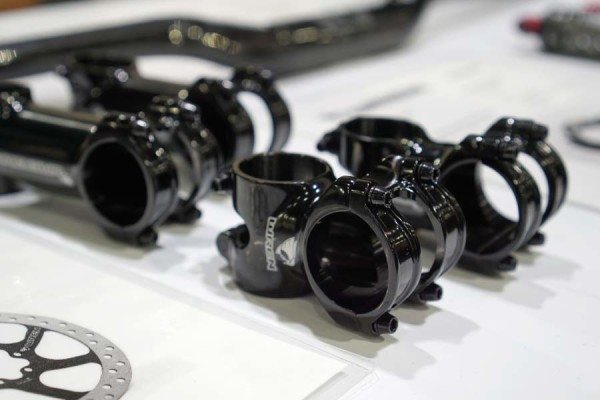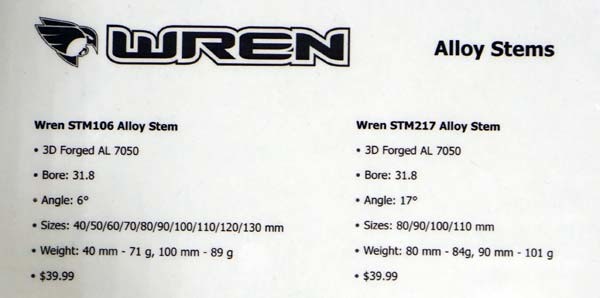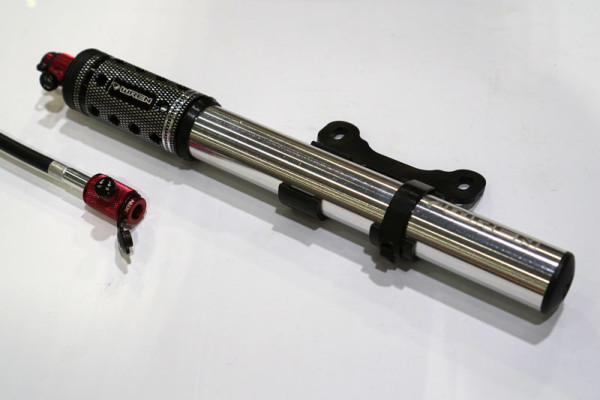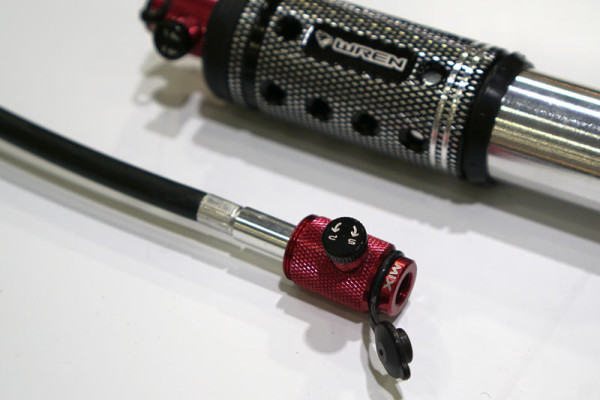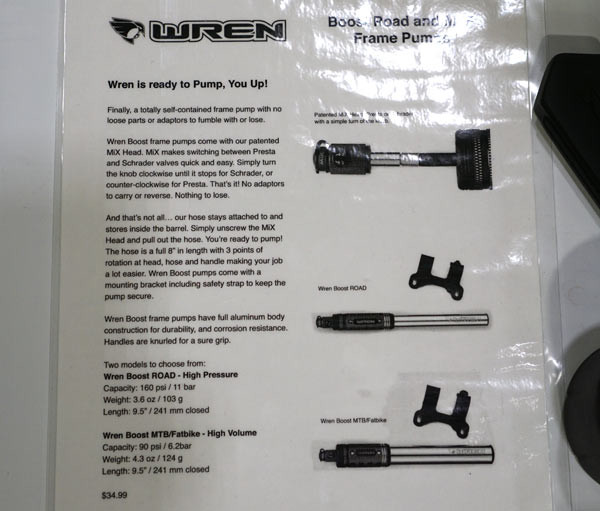Wren Sports first caught our eye at the 2015 Taipei show with his ultralight metal matrix brake rotors. Since then, those rotors have passed safety testing and gone on sale, so Kevin Wren’s attention has turned to refining his other products.
The biggest is his inverted fork, which was shown on Foes Racing’s new bikes. The fork has been around for a while, and has sometimes been rebranded by others, but it gets a few performance updates and is and of itself an interesting part. The design is somewhat modular, allowing them to offer a variety of sizes, lengths and widths using a small catalog of parts. The crown is offered in four widths to handle various axle standards, the legs and internals go from 26″ up to 29er, and it’ll fit up to 5″ tires depending on the axle to crown setup chosen.
The changes come in the form of new keyed stanchions and a TwinAir system that lets you really fine tune the feel…
While you can’t swap all of the parts yourself (the lowers are bonded into the crown), you can easily replace the sliders and internals. And servicing the fork is easy, too.
Keyed stanchions mean the axles won’t swivel around when the wheel is out, making it much easier to get the wheel back in.
The dual air system lets you set the positive and negative air chambers separately.
His new STM106 alloy stems run from 40mm all the way up to 130mm and are both very light and very inexpensive:
Another recent addition to his catalog is the Boost mini pump. No, there’s nothing to do with Boost axle spacing. The cleverness comes in that the flexible hose remains attached to the pump but extends far enough out to make it easier to pump without damaging the valve stems.
The head has a dial that switches it from Presta to Schrader without having to flip any inserts.
All in all they’re a clever little package that retails for just $34.99.
